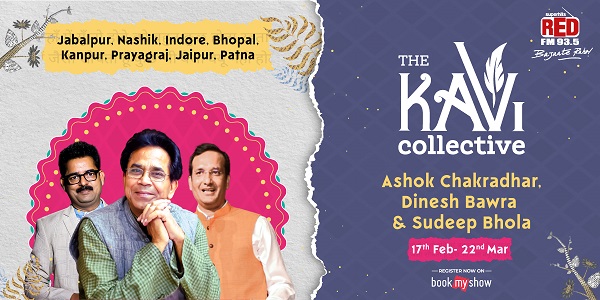Tamanna’s Mysore Sandal Endorsement Raises A Stink
That the iconic Mysore sandal has signed up the celebrity multi-lingual cine star Tamanna Bhatia for a whopping Rs 6.5 crore for two years for endorsing it has aroused both resentment and parochial outbursts in addition to rational opposition to the largesse.

That the iconic Mysore sandal has signed up the celebrity multi-lingual cine star Tamanna Bhatia for a whopping Rs 6.5 crore for two years for endorsing it has aroused both resentment and parochial outbursts in addition to rational opposition to the largesse. She is an outsider is the refrain of many regional outfits. That is hardly rational, given the fact that the brand holds appeals beyond the state borders. In any case, in this day and age when one talks of a global community, resentment on account of the outsider tag is simply outlandish. The son of the soil argument is wearing off in every walk of life, more so in the glamorous world of modelling.
Karnataka Soaps and Detergents Ltd (KSDL), the owner of the Mysore Sandal brand, says in its 44th Annual Report for the year ending March 31, 2024, that on a turnover of Rs 1,380 crore, it earned a net profit after tax of Rs 362 crore, which is quite impressive. A net profit ratio of 26% is nothing to scoff at. On the contrary, it sums up the rude financial health of the company insofar as profitability is concerned. It is an established brand of roughly half a century’s antiquity. Sandalwood attracts every aesthetic sensibility. No wonder the Kempa Gowda International Airport, Bangalore, has covered itself with glory by covering its interiors with sandalwood, whose pleasant smell wafts through the entire airport. It is averred that a good product sells itself. Indeed, quality is the best brand ambassador. One can also add price because Indians, by and large, are price sensitive.
Of course, Tamanna Bhatia herself is guiltless because she has obviously bargained hard with the ad agency to land this tidy sum that translates roughly to 0.2 % of its turnover, which, of course, includes products other than the brand she would be endorsing. But then percentages are often misleading. A company honcho gets paid substantially by way of commission, which is a small sliver of the net profits. The company law in India permits him 5% of the profits as salary at the maximum. Often, even 1% translates into a gargantuan sum. To wit, a large company earning a Rs 10,000 crore net profit would be paying its honcho Rs 100 crore if he has been promised 1%. The largesse causes heartburn among lesser employees when they are fobbed off with a mean salary of less than Rs 5 lakh per annum. Professional models who aren’t celebrities, too, resent the lopsided compensation; they hardly get 5% of the celebrity endorsement fees.
Who, then, is to blame for placing celebrities on a pedestal, given the fact that incremental sales, thanks to celebrity endorsement, are at best tenuous and at worst exaggerated? Remember, the KSDL is a state government company bankrolled by the taxpayers’ money, which is why the generosity to the celebrity has raised the hackles of the local hoi polloi more this time around. The blame must be squarely laid at the doors of the advertising agency retained by the KSDL because typically agencies charge 15% of the advertising project expenses. Obviously, they have a vested interest in inflating the ad spends. The KSDL gets squeezed twice over. First, the phenomenal endorsement fee to Tamanna Bhatia and 15% of such a phenomenal fee as part of the agency’s remuneration for the services rendered. Its vested interest is as pronounced as a honcho’s commission. A honcho has a vested interest in showing as large a profit as possible so his commission is proportionately larger. So, he cuts on R&D and other optional spends to the detriment of the long-term health of the company. Ditto for the ad agency. The more the project costs, the more its commission.
In addition, celebrity advertising doesn’t call for much work, even if the celebrity is wearing a toupee but daring to endorse a hair oil brand. People are supposed to be eating out of celebrities’ hands, which is only true with brands amenable to pester power. A vexed parent might buy his ward the sugary soft drink at its petulant insistence. A child is most impressionable and vulnerable to the influence of the celebrity. Be that as it may.
A lot of hard work is involved in the following variants of ad campaigns not involving celebrities:
Comparative advertising, which is arguably the best insofar as consumer education goes but which is often shunned for fear of a defamation suit filed by the rival brand that is disparaged by the ad. Of course, a lot of hard work goes into the compilation of the reliable data to swing the customer choice in its favour.
Endorsement by the satisfied customer. Remember Lintas’ Lalitaji ad campaign for Surf, the detergent brand? A satisfied customer is the best brand ambassador, as his/her words and actions have a semblance of verisimilitude, whereas a celebrity’s have insincerity writ all over the ad, which is easily seen through by the discerning viewers who often reach out for the remote during commercial breaks when the celebrity fatigue sets in sooner than later.
The Consumer Protection Act, 2019 (“CPA 2019“) provides for penalties for misleading advertisements made by endorsers (read: celebrities). As per Section 21 of the CPA, the Central Authority under the Act may order discontinuation/modification of a misleading/false advertisement prejudicial to the interest of the consumer or in contravention with consumer rights. The Central Authority may also impose a penalty on the endorser of the false or misleading advertisement, which may extend to ten lakh rupees and up to fifty lakh rupees for every subsequent contravention, testifying to its discretionary powers. The Central Authority may further prohibit the endorser of a false or misleading advertisement from making endorsements of any product or service for a period which may extend to one year and up to three years for every subsequent contravention. Apart from the anaemic nature of the punishment regime, the defence afforded and made available to the endorsers to help them evade it—that they exercised due diligence to verify the veracity of the claims made in the advertisement regarding the product or service endorsed—is laughably lenient.
Coming back to Tamanna Bhatia, she is hardly at fault, though the brouhaha is all about her. Ad agencies perhaps are bamboozling the company bigwigs about the infinite power of celebrities in selling products and services for brands. And the bigwigs fall hook, line and sinker for their disingenuous pitch in the lulling belief that in a country where both hero worship and couch potatoes flourish, celebrity advertising intuitively gives more bang for the bucks. And, BTW, why pick on the KSDL alone? What about the SBI, the quintessential Sarkari bank, for example, that splurges on MS Dhoni?
S Murlidharan is a freelance columnist and writes on economics, business, legal and taxation issues.






















